Nose Injuries
The bones in the nose are the most frequently broken (fractured) in the face. A successful treatment aims at restoring normal function and appearance.
Cartilage grafts taken from the patient’s rib may be used to rebuild the framework of the nose. Cartilage is an elastic bone-like tissue which can be carved to a desired shape. The carved cartilage can be used for the nasal septum (the central prominence of the nose) or the nose tip or the sides. Since the graft is taken from the patient’s own body, there is no risk of rejection, unlike artificial grafts.
-
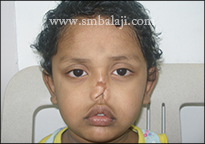
A boy's nose severy injured in an accident
-
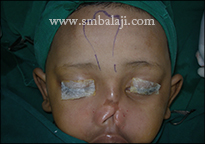
During surgery, forehead flap region marked
-
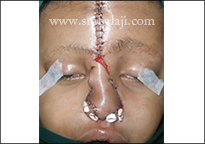
Forehead flap used for nose reconstruction
-
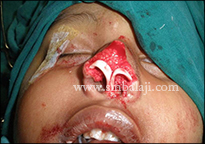
The sides of the nose reconstructed using cartilage graft
-
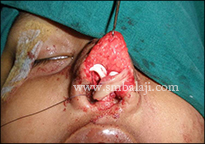
The part connecting the nose tip to the upper lip is reconstructed
-
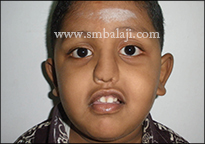
After successful nose reconstruction
Forehead flaps can also be used to reconstruct the nose. A skin graft is taken from the forehead region and used to rebuild the nose. Since the graft is taken locally, there is no color mismatch.
The graft consisting of a section of the skin along with blood vessels is lifted from the forehead region with the base of the graft still attached to the forehead in between the eyebrows. The wound on the forehead is sutured. The graft is then brought downwards and attached to the nose tip. After blood supply is established in the nose, the graft tissue is cut off from the forehead.
In some cases of trauma, both the right and left condyle may be fractured and displaced. In such instances, the patient’s occlusion or contact between upper and lower teeth gets deranged. The fracture site is surgically exposed, the fractured segments are stabilized and fixed with bone plates. This is done only after accurately restoring the patient’s occlusion.
Seen here are photographs of a young boy who was suffered an accidental injury to his nose. The skeletal framework of the nose was carefully reconstructed to restore normal scarless appearance while taking into account that normal overall growth of the face should not be hindered.
